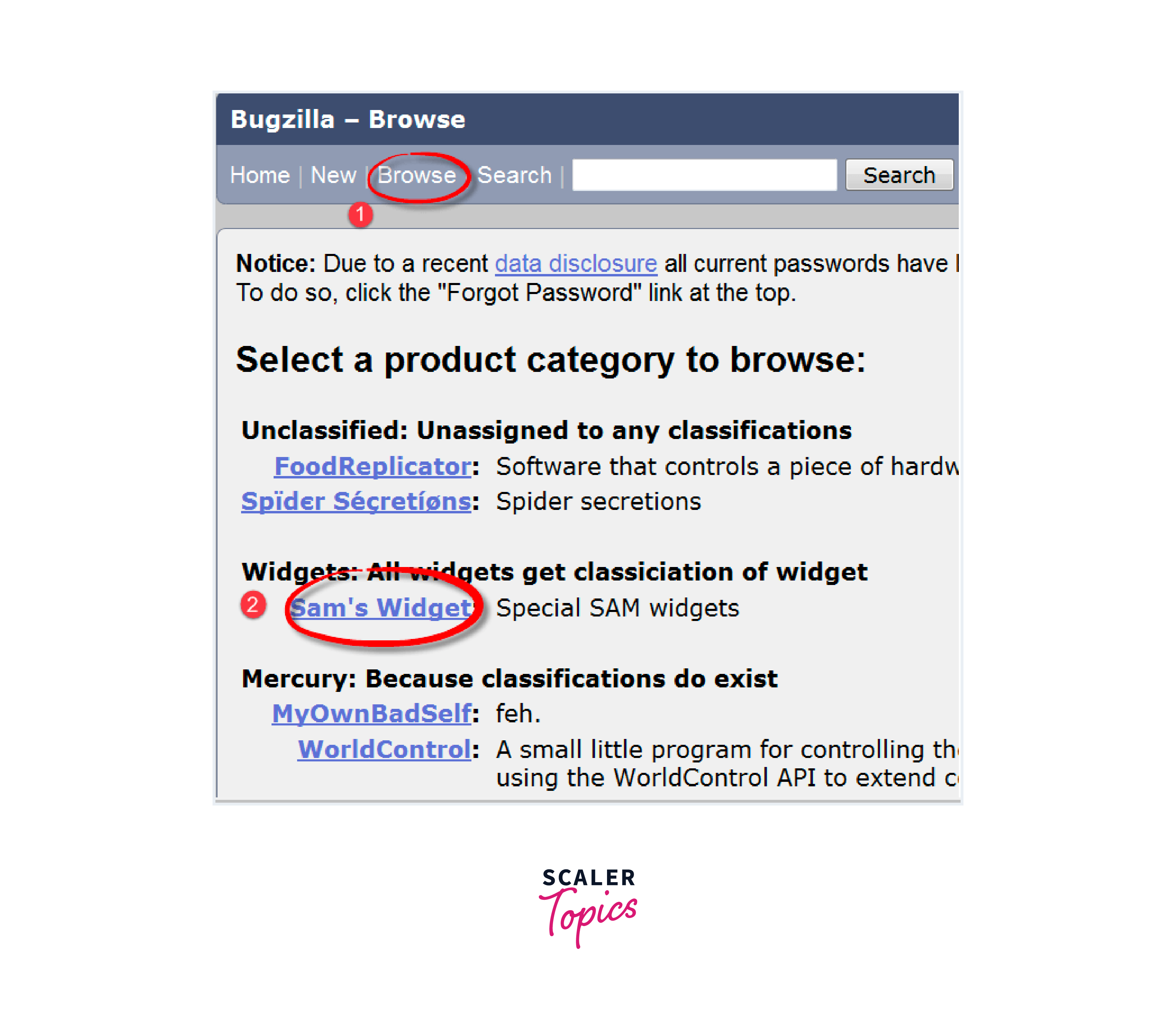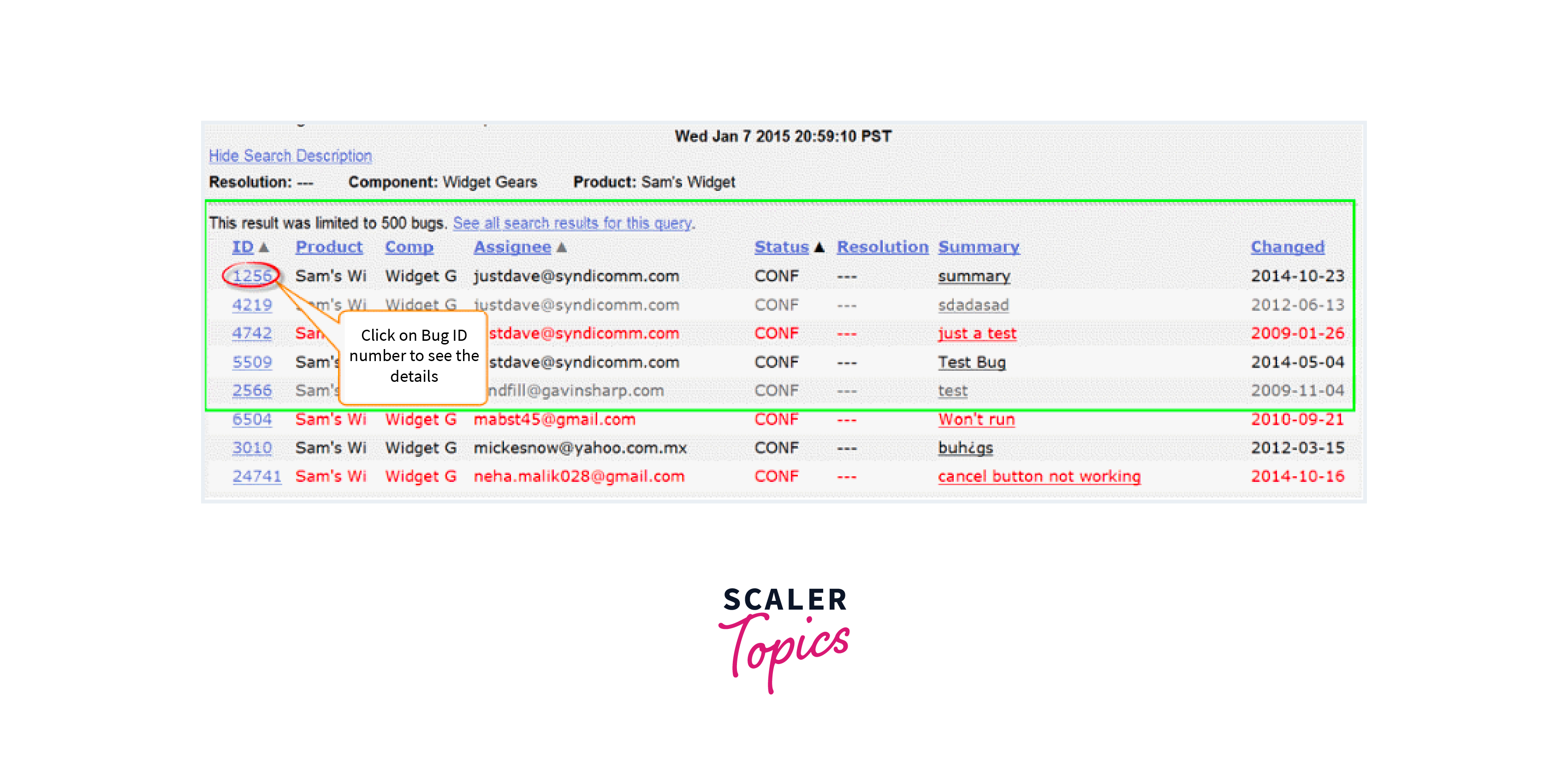Browse Function in BugZilla
Overview
Bugzilla's browse feature is a powerful feature that allows users to explore and navigate the bug database. It provides a comprehensive view of bugs, products, components, users, and other relevant entities in the bug-tracking system. The browsing feature is designed to facilitate efficient bug management, analysis, and tracking of software projects.
Introduction
Bugzilla's browsing feature allows users to access different sections or categories of the bug-tracking system. These sections typically include lists of bugs, products and components, users and groups, and reports and graphs. Bug lists allow users to browse bugs by various criteria, such as status, severity, priority, product, or component.
The Products and Components section allows users to view the products and related parts defined in Bugzilla. It provides an organized view of how defects are classified in the system, helping users navigate between different product categories and understand defect distribution.
How to use Browse Function in Bugzilla
- We will use the browse function to find your error, click Browse in the main menu.

- As soon as you click the Browse button, a window will appear that says "Select a product category to browse", as shown below, we will browse the error by category.
- After pressing the browse button
- Select the "Sam's Widget" product as it is after creating a bug for it

- This will open another window, here click on "Gears widget". Bugzilla components are subcomponents of the product. For example, if our product is SAM'S WIDGET, whose component is WIDGET GEARS.

- Clicking on the component opens a new window. All errors generated in a specific category are listed here. Select Bug#ID from the list of bugs to see more information about the bug.

This will open another window where you can see the details of your error in more detail. You can also edit the delegate, QA contact, or CC list in the same window.

Browse Functionality
Bugzilla's browsing feature is a feature that allows users to explore and navigate the bug tracking system. It provides a comprehensive and organized view of defects, products, components, users, and other relevant entities, facilitating the management and analysis of defect-related data.
Key features and characteristics of Bugzilla's browser functionality include:
- Bug Lists:
Users can browse bug lists by various criteria such as Status, Severity, Priority, Product, or Component. This allows a quick overview of errors in specific contexts or classes. - Products and Components:
The browse function allows users to explore products and components defined in Bugzilla. It provides a hierarchical view of how defects are organized into different product categories and related components. - Users and Groups:
Users can browse a list of Bugzilla registered users and groups. This helps identify the appropriate individuals or teams involved in bug reporting, triaging, or bug fixing. - Reports and Graphs:
Bugzilla's browsing features often include predefined reports and graphs that visually provide information about bugs. These reports and graphs provide insight into error trends, distributions, and metrics to aid monitoring and decision-making. - Search and Filter:
The browsing function usually includes search and filter functions that allow users to refine the displayed information according to certain criteria. Users can use search terms, filters, and sorting options to focus on specific error attributes or a subset of errors.
Set up Configurations in Browse
In Bugzilla, you can configure your browser to customize the display and behavior according to your preferences. Here are some common configuration options to consider.
- Column selection:
In Bugzilla, you can choose which columns or fields are displayed in the browse view. You can select the appropriate fields that provide valuable information for your bug-tracking needs. Common fields include error ID, summary, status, severity, priority, and address. - Default order:
You can set the default order of the browsing view. For example, you can sort errors by creation date, last modified date, or severity. Setting the default sorting ensures that the list of errors is displayed in the desired order when you use the browse function. - Custom Filters:
Bugzilla allows you to set custom filters for the browse view. These filters can be based on specific criteria such as failure status, severity, product, or component. By creating custom filters, you can quickly access predefined views tailored to your bug-tracking requirements. - Display settings:
Bugzilla provides options to customize the display settings of the browsing functions. To improve the browsing experience, you can choose the number of errors displayed on the page, configure the paging behavior and configure other visual aspects. - Saved Views:
Bugzilla allows you to save certain settings as saved views. This feature allows you to save custom settings and access them for future use. Saved views can include selected columns, sorting, filters, and other settings that provide quick access to frequently used browsing settings.
To configure these settings in Bugzilla, you usually need administrator privileges or equivalent. The exact steps and available options may depend on your Bugzilla version and configuration.
Conclusion
- Bugzilla's browsing feature allows users to navigate and explore the bug database.
- It provides a comprehensive view of bugs, products, components, users, and reports.
- Users can browse error lists based on various criteria and categories.
- The browsing function offers options for selecting columns, sorting, and customizing display settings.
- Custom filters can be created to quickly access specific error views.
- Saved views allow users to save and reuse custom settings.
- The browsing function enables effective error management, analysis, and monitoring in software development projects.
